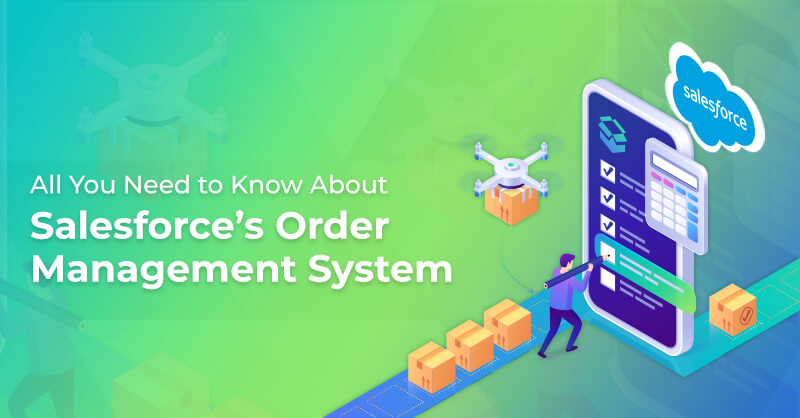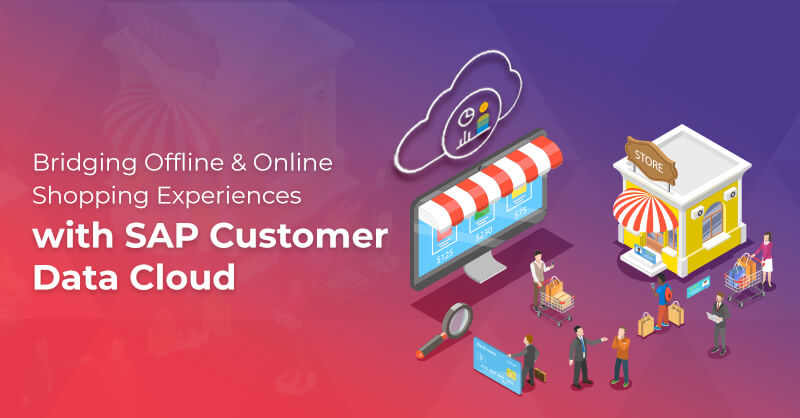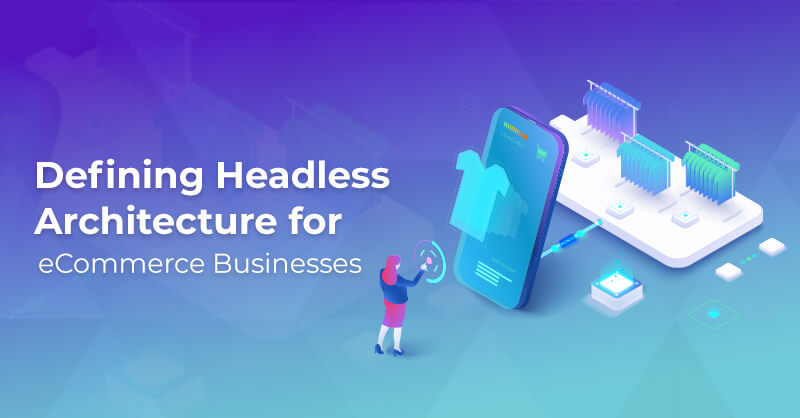Comparing the Total Cost of Ownership (TCO) for eCommerce Platforms
Written by Poonam Chandersy
Technical Content WriterWhile selecting an eCommerce platform, businesses look for the ideal platform that meets their requirements. However, the most crucial deciding factor tends to be the costs associated with the platform. Often, businesses resort to the cheaper-priced solution, shying away from vendors that don't display their pricing on their website, making assumptions that it will be too costly. Only to realize that the cheaper solution ends up being more expensive due to the additional costs incurred.
To understand the total cost of ownership, businesses need to consider both the first-year costs and the future costs involved. These costs include but are not limited to:
- Base Software Fee or Licensing Fee
- Hosting Cost
- Implementation Cost
- Third-Party Integration Cost
- Cost of Changes
Base Software Fee/Licensing Fee
The base software fee or licensing fee is the "upfront" price that reflects either a monthly or yearly license fee and can be tier-based, continuous revenue-based, or a percentage of sales-based.
Tier-based means that there is a predefined price that the business is locked into based on the current and expected revenue. commercetools and Elastic Path are examples of eCommerce vendors who offer tier-pricing by payment. The pricing is based on the transaction volume, which can be defined by either the Gross Merchandise Volume (GMV) or the number of orders processed, usually in the case of B2B companies. This pricing strategy allows businesses to plan the estimated growth in the following years, lock in a price, and budget future spending. As a result, companies can seamlessly plan their eCommerce future with guaranteed pricing and clarity year over year.
Continuous revenue-based stands for eCommerce vendors pricing their services based on the revenue tiers that the business fall under and automatically increasing them to the next pricing tier as soon as the revenue increases. Vendors such as BigCommerce and Magento use this pricing strategy.
Percentage of sales-based pricing includes eCommerce vendors taking a percentage of the Gross Merchandise Volume. Salesforce Commerce is an example of a vendor that uses this model. While this model can be quite attractive for businesses since there are no immediate upfront costs, it depends on how the company performs. However, the vendors tend to charge an additional annual mandatory fee, resulting in hidden costs that businesses may not be aware of upfront.
Hosting Cost
Most of the time, hosting costs are overlooked by teams when planning the yearly budget but tend to be one of the highest costs to be considered as it determines the website's performance. Some platforms offer to host on-premise or on a cloud platform, while others allow businesses to choose an outside hosting vendor to be integrated with their solution. The hosting cost is usually determined by the bandwidth and the seats the company requires.
Implementation Cost
Businesses most fear implementation costs as they are perceived as the highest costs that companies will incur. These usually depend on the developer's cost and the time it takes to build the front-end and backend of the system. However, for an out-of-the-box solution, most of the costs depend on the changes and customizations needed to alter the pre-built solution. For businesses with a unique brand vision and requirements, there will most likely be customizations required, and working with an agency or systems integrator helps with:
Software Systems Integrations
Frontend Development
Backend Development
UI/UX Design
Omnichannel Design
Third-Party Integration Costs
Third-party integration costs are intricate as they include either plugin supplied by the platform as an application or API integrations from third-party vendors. The purpose of these integrations is to extend the existing platform with other functionalities essentially. Some of the core third-party integrations include content infrastructure, search engines, sales tax management, product information management (PIM), and shipping solutions. These costs differ from vendor to vendor and depend on businesses if they leverage a third-party as a plugin to the out-of-the-box solution or purchase a specific vendor solution for a composable commerce solution.
Cost of Changes
One of the highest costs often neglected is the costs associated with making changes and upgrades to the solution. Businesses often plan and make decisions for the present times, but when times change, businesses are faced with costly changes that are detrimental to budget planning. In addition, if businesses want to keep up with the ever-changing times, updates and changes are inevitable, making it imperative to understand what these costs will be in the future. Some changes that businesses must be prepared for include:
- Upgrades to the commerce software
- Maintenance of the system
- Upgrades or changes to the third-party technology partners
- Changes in the backend functionality to fit the business requirements
- Addition of new user experiences to keep up with the customer expectations
These changes can prove quite costly with traditional legacy platforms, as their rigid structure makes changes more complex, thus increasing the developer costs. On the other hand, composable commerce solutions are more flexible and lower the overall total cost of changes by about 40% compared to rigid legacy platforms.
Now that we have discussed the various costing categories, we will delve into an overview of the total costs businesses can expect on a monthly or annual basis for the top legacy and composable commerce solutions in the market.
BigCommerce positions itself as an eCommerce platform for high-volume brands with two main payment plans – Essential Plan and Enterprise Plan.
BigCommerce Essential Plan
| Plan | BigCommerce Standard | BigCommerce Plus | BigCommerce Pro |
|---|---|---|---|
| Yearly Sales | $50,000 | $150,000 | $400,000 |
| Monthly Pricing | $29.95 | $79.95 | $299.95 |
The above pricing represents their upfront license fee that includes an out-of-the-box store with zero customization and provides businesses with all the features required to get a basic store up and running. Three additional costs that may not be considered when selecting BigCommerce include:
- They automatically increase businesses to the next tier if sales exceed the threshold
- An additional fee of $150 per $200K sales increase if the amount exceeds the BigCommerce Pro Sales Threshold – for example, 800k + Sales = $700+ /month
- Costs associated with plugin applications for advanced services range from $145 - $235
BigCommerce Enterprise
Big Commerce Enterprise offers all the core features, along with the addition of some premium features, including hosting, security, and support. While their pricing widely varies based on the average order value and the average number of orders processed per month, the pricing plan ranges between $400 and $20,000 monthly. For example, a $250,000 yearly revenue will incur the following costs:
- Infrastructure cost - $38,000+
- Site launch cost - Design, QA Build: $30,000+, Integrations: $3000
- Managed Support Costs - $5000
As a market leader for Small and Medium Business (SMB) owners looking for an out-of-the-box eCommerce website, adopting Shopify includes giving up flexibility and running the eCommerce website according to Shopify's templates and structures. However, this works for most companies, as they want to create a standard website.
Shopify has five primary offerings:
Lite, starting at $9 per month
Basic, starting at $28 per month
Standard, starting at $79 per month
Advanced, starting at $299 per month
Shopify+, starting at $2000 per month
Shopify also charges gateway fees that range from 2.15% to 3% + $.30 per transaction.
Magento positions itself as an Open-Source eCommerce platform that successfully provides businesses with a flexible, digital commerce solution to sell online. They have two main plans, the Magento Open Source, and Magento Enterprise.
Magento Open Source
Magento's free Open-Source plan is a customizable option when compared to BigCommerce. However, the only complimentary feature of this option is the licensing fee/download. There are a few hidden costs in the background:
- Implementation - $30,000 - $100,000+
- Hosting - $1000+
- Themes - $29 - $499
- Maintenance and support - $30,000+
- Extensions - $0 - $10,000
- Third-Party Integrations - $6000
These amounts add up to a significant figure quite rapidly. In all transparency, the price for a customized store ranges from $30,000 to $100,000 upwards.
Magento Enterprise
Magento Enterprise is the premium paid version of Magento designed for stores that need more based on the size of the company and the level of customization the business is looking to achieve. However, this option comes at a significantly higher licensing fee. Magento displays an upfront price between $22,000 and $125,000 per year based on the revenue.
This does include access to advanced features such as security, mobile commerce, and free professional customer support. In addition to including the open-source version's core features, the same features tend to come at a higher price for this plan. Some of these higher feature costs include:
- Implementation - $60,000+
- Hosting - $7000+
- Themes - $29 - $499
- Magento Certified Gold Partner - $10,000
- Extensions - $0 - $10,000
- Third-Party Integrations - $6000
While this option offers more customization, it lacks complete control over the content. The price for this package starts between $100,000 and $250,000.
Considered the most futuristic and innovative commerce solution, commercetools is built on the Microservices, API-first, Cloud Native, and Headless (MACH) architecture principles. It has the most flexibility and is a cloud-based commerce API solution in the industry today. They have been quite low-key about revealing their pricing details. However, the costs include:
- Implementation - $300,000 - $1 Million
- License Fees - $200,000 - $500,000 per year
- Specialized Resources - $150,000 per year

Elastic Path offers composable commerce-as-a-service, an API-first headless commerce microservices solution. Composable commerce is a modern approach to eCommerce built on composability. The core functionality and partner integrations can be selected and assembled in various combinations to satisfy specific business requirements at high speed. Composable commerce is built on three main principles:
Modular Architecture
Open Ecosystem
Business Centric Solutions
With these tents, Elastic Path has reduced the overall total cost of ownership by 25%. Providing tier-based pricing based on Gross Merchandise Revenue, a 10M revenue pricing will be around 50K. Elastic Path also offers Composable Commerce Experience Assurance that de-risks the management of multi-vendor solutions by providing a 24x7 expert global support team. The cost for this feature is 25% of the annual contract value, capped at $25,000 per year. Additional charges include implementation costs, hosting fees, and third-party costs.
Conclusion
Understanding the total cost of ownership is not linear and straightforward; often, businesses prioritize specific categories of expenses and lose the overall sight of the expected total cost in the future. In addition, with each vendor providing various offerings, it isn't an easy task to compare them across the board. However, following this guide and assessing each cost category provides teams with an excellent understanding to make an informed decision.
Royal Cyber has been associated with the eCommerce industry since the beginning. We can guide you to the best platform based on your business model, requirements, strategical plan, target audience, and company vision. These goals can increase revenue, improve customer engagement, or even enter a new market. We work with different solutions and technologies and can run accurate analyses based on specific requirements. Contact us and let us help you choose the platform that best fits your company so you too can benefit from the growing eCommerce industry.
Please note: The pricing figures are an approximate figure based on our experience and market research. The prices may vary depending on geographies and time of reading this.







